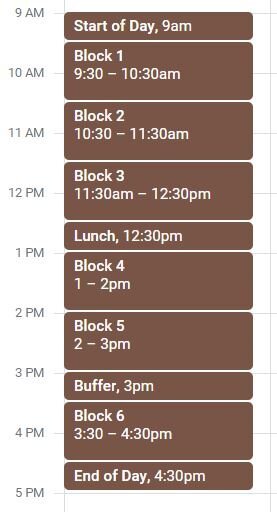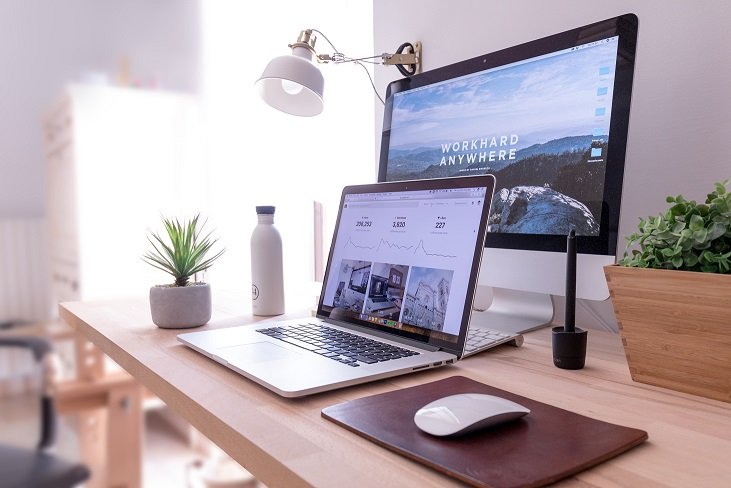How to structure your time and lift productivity
A client that I'm working with at the moment (an employee) has been challenged with getting focused and being productive.
They're the sort of person that takes lots of notes, has plenty of ideas and is generally pretty clear on what they need to do. Except they still struggle to get through their work and to cover all their bases.
To help overcome the overwhelm of multiple tasks, due dates and expectations we've adopted a simple, tried and tested approach.
Time Blocking
I certainly can't claim any credit for this concept (if only!), but it's one that works for me and many others too.
The idea is to give yourself blocks of time to complete specific tasks throughout the day.
Think about your time in high school. You likely had multiple class periods during the day with some breaks in between - recess and lunch. During each period you were focused on one topic or subject and spent around an hour on it.
All we're doing here is applying the exact same logic. Creating a number blocks of time to start with for focused work, breaking them up with short 'recharge' breaks.
Here's my approach to this:
Step 1
Start with setting aside a half hour in the morning and a half hour in the afternoon - we'll come back to these shortly.
Step 2
Block out time for lunch - this an important time to step away from your work. Refuel your body with something to eat and get out for a walk etc to refuel your mind.
Step 3
Add in a series of 1 hour blocks throughout the rest of the day. You may end up with an extraneous half hour - that's great as you'll be needing that for Step 4.
Step 4
I do this last, perhaps you'll find switching this step with the last one easier. However, give yourself a halfhour 'buffer' slot mid afternoon.
You know that time when the energy levels are falling and your attention is really starting to wander. We've got a better use for this window which we'll come to.
Once you've done that you should end up with a day that looks something like this:
Time Blocks in Practice
Ok, so you've got these time blocks but then what?
With my client we've gone through the key tasks and activities that need to be completed regularly.
Across each day in the week, specific blocks are then dedicated to those activities. The remaining blocks are lefts as 'tentative' in the calendar (so other people can still book meetings etc).
End of Day - start with the end in mind
The End of Day block is there to plan the next day and to revise and future days based on the results of the current day.
Ie, what didn't get completed that needs to be done tomorrow, or later in the week? Update the following day(s) time blocks to set aside working time for those activities.
Equally, did anything new come up during the day that you need to set aside time to work on, prepare for or attend (ie meetings or training etc)?
Start of Day
The Start of Day block is to give yourself time to review the day ahead, get clear on what you need to get done as your priorities and do a quick email scan. Is there anything in your inbox that might warrant a change to the day?
Buffer Block
The intention of this window in the low energy point in the afternoon is to take a short recharge break. Get up for a walk (even if just around the office). Get a drink etc.
It's also a good time to check in on your emails, just as you did at the beginning of the day.
After only doing this for a few days they quickly found it made a difference in their productivity levels.
Having a structure to work within is something that most people find helpful. Many neurodiverse people in particular will benefit from and often are looking for a structured approach to their work.
There are a number of other elements to this and this is a quick intro to how you can help neurodiverse team members, colleagues and others to reduce anxiety and increase their productivity at work.
You might even find it helpful yourself!
It's another simple strategy that is just so effective for so many people.
Let me know if you'd like some help putting something like this in place.
Feel free to setup some time with me for a call.
To learn more about supporting Neurodiverse employees, even the ones you have and don’t know about - you may want to check out this page.








